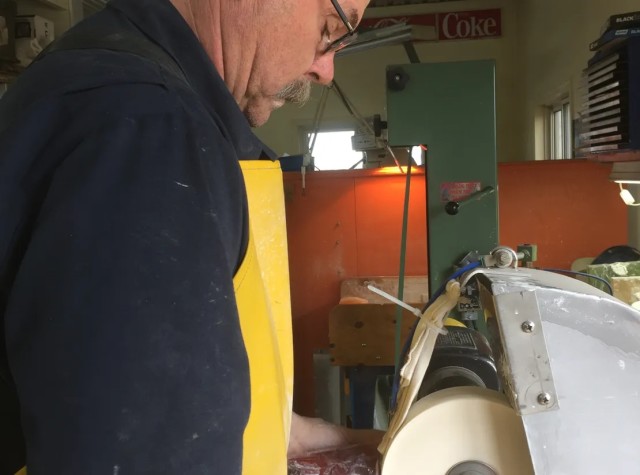In 2008, following a 38 year career as a tool maker, manager and business owner, George Whitney left his position to become a full-time artist working exclusively in glass. Using published materials and attending workshops with some of the top talents working in glass, he has worked to develop his technical skills and his voice. Born in Ontario, Canada in 1952 George is continuing to build his studio and gallery there. He has participated in many local shows and competitions and he has work in collections in Canada and the USA.
George came to glass later in life after spending time with steel and wood. It was almost by accident but ten years later, he is still working with glass to develop his style and technique.
“Glass is an amazing material to work with. It can be transparent or opaque. It can reflect both internally and externally. It can be very fragile and also massive and solid. I am very interested in what happens inside the glass sculpture, and how it relates to what is happening on the outside. The contrast between the polished surfaces and the natural textures taken from nature and the way that the light interacts and changes the piece are increasingly part of the objective. During the last year, I have been working to enlarge upon the outside of the work, while maintaining the inner form”.
“Glass is unlike all other media that can be used for sculpture. The fact that you can see into the heart of the piece and see the form that it is on the other side presents challenges and opportunities”.
George’s method of using ice and eventually naturally occurring icicles to generate the voids and cavities was developed during his search for ways to create voids in the glass. The interaction between the ice and the hot wax creates incredible surface textures on the inner forms. These textures form the surface that is seen by the viewer. He is now working to bring other textures to his work and to move from rectangular cross sections to shapes that enhance and expand on the visual impact of the pieces.
“I am leaving some of the surfaces as cast, some are polished and finished with a matte finish and some are taken to a full polish. Naturally, light is critical to the way the viewer sees the work and what impression they are left with. It is important to me that I continue to build upon my abilities and to bring more tools to the finished work. I am always looking for opportunities to see and learn and practise. The work that I am doing is time intensive. From the development of the design to the making of the wax and the mould and the firing and finishing can be a long and challenging path, however the end result can only be produced using glass and the end does indeed justify the means”.
